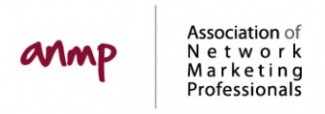By Len Clements © 2000
The “system” is just so simple. You say the same thing, send the same stuff, and get the same enthusiastic response, every time. Your downline builds smoothly, swiftly, and effortlessly, because the “system” is so effective, and easily duplicatable.
In a perfect world such a system may work. Clearly, this is not a perfect world.
I’ve found there are six common challenges to many of the “systems” that are in place today.
First, many are designed more to sell tapes, tools, training or lead generation services than to build downlines. Certainly there is a value to these types of products and services, to an extent. I’m by no means anti-tools or anti-training, and I’m certainly not opposed to good lead generation sources. I’m talking about uplines who design systems as for-profit businesses. I think the system should be a break-even venture at best. The idea should be to make it as accessible (affordable) to as many people as possible, for as long as possible, with the reward coming from the resulting increase in downline sales volume.
I’ve also found many situations where uplines were not using, nor had they ever used, the very system they were pitching to their downline. Often times this would involve the promotion of massive tape or postcard mailings, or cold calling “opportunity seeker” lists. It’s no skin of the back of the upline “leader” if his downline were to waste valuable funds on these recruiting methods. Yes, tapes and postcards worked well several years ago for some. That was before the US Postal System became saturated with tapes and postcards as others attempted to duplicate their success. Such systems are based on the “numbers game” theory. Take enough shots and you’re bound to hit the target occasionally. However, imagine you’re standing in the end zone of a football field and there’s an archery target positioned at the other end of the field – and you have to shoot with your eyes closed. Now imagine it costs you a buck an arrow.
Many systems are given the responsibility for huge, fast growth in a leader’s organization. They’ll claim to have made $10,000 their first month, thanks to their “revolutionary” and of course “duplicatable” system. The income claim may even be true (although still legally suspect, but that’s another article). But rarely, if ever, is the “duplicatable” part. What’s typically missing from the story is that the person had a substantial downline in a previous company and moved a chunk of it over. Understand, I’m not suggesting there’s anything wrong with this, as long as there’s full disclosure. If the upline were to openly admit that he made so much so soon because he moved a group over, no problem. Certainly what he did to build that original group may have been honest and duplicatable, but the SPEED and EXTENT to which his downline grew in the new company was absolutely not the responsibility of any system, nor was it duplicatable.
Still others tout the success of their system in generating faster, larger incomes when much, if not most, of that income came from a deal they cut with corporate. Several years ago, while I and a few of my friends were shopping around for a company to join, we were offered a “front line” position to one company and “double the compensation.” Every percentage in the plan double it. Yet another offered us a front line position and a gift of almost 2,000 distributors (we eventually joined a company that made no deal). While not rampant, this practice of deal making is certainly not rare. Frankly, I’m not sure I even have a problem with it as long as, again, there is full disclosure. I suppose we all have the right to make the best deal the market will allow for our services, just like any other industry as long as you don’t promote your success as being duplicatable, or based on any recruiting or sales system.
Another challenge I find with many systems in use today is that they are based on theory rather than real world experience. They’re based on how we WISH things would happen rather than what really happens. For example, the 50 line phone script where you call your friend Bob and ask him if he’d be interested in hearing about an “exciting, ground floor opportunity” or an “revolutionary new product” and Bob, according to the script, enthusiastically responds, “Sure! Tell me about it.” As anyone with even a week of practical experience has learned, Bob rarely responds with such unquestioning acceptance of your offer thus making the next 49 lines of the script useless. Or, there are systems where we are suppose to send information packages to folks that include lengthy books, or other elaborate, relatively expensive materials, as if even a few of our prospects are actually going to devour it all before we follow up with them in a few days. Then there’s the fantasy land internet recruiting systems where we, allegedly, are going to recruit massive numbers of serious, committed, hard working professional networkers based solely on some enticing verbiage and a few pretty pictures.
Finally, in the vast majority of “duplicatable systems” I’ve seen (and I’ve seen many over the last decade of full time research and practice) there’s simply no aiming at the target. Like the not-so-exaggerated example I gave to open this article, we are suppose to generate leads from the same sources, say the same scripted pitch when we contact them, then send the same information package in the mail, or direct them to the same internet site or canned phone presentation. Then, when following up, we are programmed, almost robotically, to respond to various common questions and concerns with the same pat, even cliche’ answers. Indeed, this very aspect of the system is what makes it so “duplicatable.” Yet, one of the most basic, fundamental tenants of sales, at least in every other industry, is to “target” your prospect. Learn a little about therm. Find out what there issues are their wants and needs and address them individually. Such cookie cutter systems fail in this, utterly. Yes, it’s true that opening your eyes and aiming at the target does take a little more work, and it is a skill that does improve with experience, but practicing it will cause you to hit the target ten times more often!
Let’s dwell on this final point for a moment. Here’s a simple, no brainer, qualifying question that we teach as part of our system: “Have you ever been involved in network marketing before?” Since there are only three possible responses to this question, and an obvious follow up question, there is no need for a script here. Your prospect must answer with either: A) No I’ve never been involved, or; B) Yes, I was once but not anymore, or; C) Yes, I am right now. The follow up to each would be: A) What got you interested now?, or; B) What happened with your last experience?, or; C) Why are you looking for another opportunity? Now you simply sit back, take notes, and listen. Capture sound bites that reveal what the particular issues, concerns, fears, and desires are for this specific prospect. If they answer with B and you discover their previous company was shut down by legal authorities, or simply went bankrupt, rather than giving a predesigned speech about your “highest paying plan” or “life changing products” you might want to focus a little more on company stability. If they answer with C and say they’re dissatisfied with their current MLM program due to lack of support, you might want to emphasize your great support system. You will certainly find folks who answer with A only to discover they didn’t understand this was network marketing, and they may have some concerns about that. Best you define and defend the MLM concept first before even saying a word about your specific opportunity. You can glean so much valuable information about a prospect from this one simple qualifying question. Yet many systems are completely void of any such information gathering mechanism. They’re based on the proverbial “throw the mud against the wall and see what sticks” method. Even when it sticks, it’s still mud.
When evaluating a system, ask these questions:
How much profit is build into your training and support tools? There should be very little, and preferable none.
Did those who designed this system use the same system to build their downline? If so, when? What worked just five years ago may not be as effective today.
Did you move a group over from another company? If so, how much does that group account for your current touted income?
Did you make any kind of deal with corporate? Are you receiving any income outside what is normally paid to all other distributors? Also, ask them what level they are to the company. If they are first level, they are either a founding distributor or they cut a deal.
Did ANYONE ever actually use this system to build a substantial, sustained downline? Or, is it based on Pollyannish theory? Note: “Sustained” is a key qualifier to this question. There are many recruitment focused systems that effectively build large downlines but generate little recurrent sales volume, thus are volatile and short lived.
Are any fundamental, time proven sales methods built into the system? Specifically, does it allow for any variance in the presentation or information package? It should.
Please understand, there are many effective, proven systems being taught and practiced throughout network marketing today. As usual, I’m dwelling on the negative because, well, it’s my job. I’m here to tell you what you won’t hear at a typical opportunity meeting. Bad, or just impotent systems are not the norm, but they are all too common, and you should be aware of not only what to look for, but look out for.










